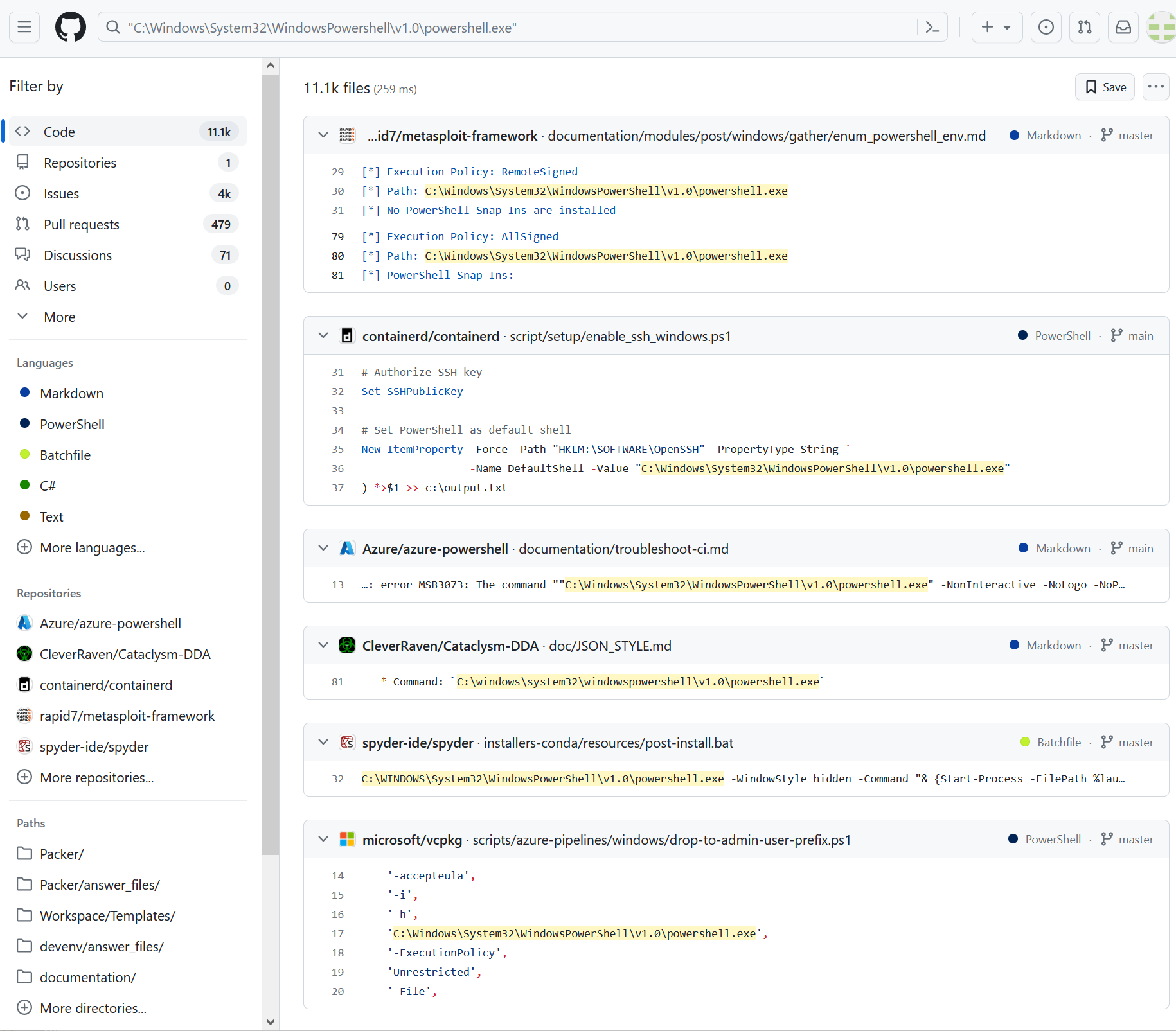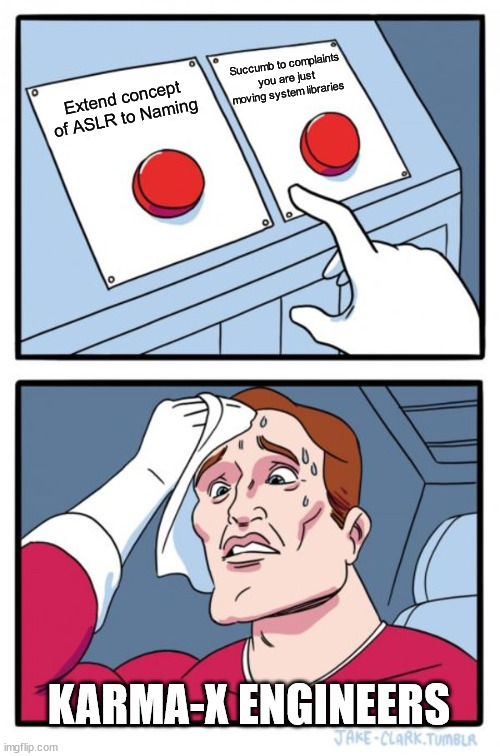
Karma-X Blog
HappyCamper: Doubling Down On Naming Space Location Randomization (NSLR)

Enter HappyCamper, a formal demonstration of the concept of "Naming Space Location Randomization - NSLR" for cyber defense.
Empowering administrators to obscure the location of critical system binaries, effectively adding a "filename password" that stumps adversaries relying on hard-coded paths
Naming Space Location Randomization
HappyCamper is a tool which coins the term "Naming Space Location Randomization - NSLR" which formally demonstrates a particular aspect of "moving target defense" by empowering administrators to obscure the location of critical system binaries used by attackers.
Before the implementation of Address Space Layout Randomization (ASLR), attackers frequently exploited the predictable fixed locations of system libraries, such as Kernel32.dll on Windows, to execute malicious shellcode on vulnerable systems.
Kernel32.dll, being a core Windows library that provides access to vital system functionalities, was a prime target because its APIs facilitated operations crucial for the execution of arbitrary code. The static memory address locations of these libraries and their exported functions enabled attackers to craft exploits with hardcoded addresses pointing directly to useful functions within these libraries.
The predictability of library locations drastically simplified the development of reliable exploits that could be reused across many systems.
The introduction of ASLR was a widespread mitigation technique which significantly increased the difficulty of such attacks by randomizing the addresses of loaded libraries and executables on each system, making the exploitation of such vulnerabilities considerably more challenging.
Living-Off-The-Land Binaries (LoLBins) represent a significant challenge in the field of cybersecurity, as they turn the very tools designed for system management and troubleshooting into weapons against the digital infrastructure they are meant to support.
LoLBins are legitimate, native system applications that attackers exploit to execute malicious activities without having to introduce new malware into a target environment, thus evading detection by traditional security mechanisms.
Scripting & system control
Command execution
File downloads
System reconnaissance
PowerShell, with its powerful scripting capabilities and deep system integration, stands out as a prime example. Attackers leverage PowerShell to conduct a wide array of malicious operations, from data exfiltration to system reconnaissance and beyond, all while masquerading their activities under the guise of legitimate system processes.
Randomizing Location Of Key System Binaries To Defend Against Living-Off-The-Land
Continuing from the foundation set by ASLR, HappyCamper introduces the concept of Naming Space Location Randomization (NSLR), which extends the principle of unpredictability to the filesystem level, specifically targeting LoLBin binaries.
NSLR works by allowing system administrators to rename critical system binaries like PowerShell, adding an unpredictable "filename password". This means that even if attackers can navigate a system's defenses and execute code, their reliance on the hardcoded paths to these LoLBins for further actions can lead them to a halt.
Without knowing the new, randomized names of these binaries, their scripts and tools will fail to execute the intended malicious operations.
By renaming powershell.exe, any script or tool designed to utilize PowerShell by its default name will not find the executable, thwarting the attack attempt.
This approach, while simple, adds a significant hurdle for attackers, especially those relying on automated tools and scripts that expect these binaries to reside at known locations.
Hardcoded PowerShell paths found on GitHub in both offensive and defensive tools

This commonality underscores a significant vulnerability – the reliance on static, predictable paths to system binaries like PowerShell, which attackers and defenders alike exploit. For attackers, such hardcoded paths are gateways to executing malicious scripts and commands.
After all, how hard is it for defenders to internally share the location of PowerShell for authorized scripts?
Constantly shifting landscape makes attacks harder
Attempts to access original names serve as IoCs
Adds authentication layer to system binaries
Disrupts automated attack tools and scripts
Complements existing security measures
Failed access attempts alert security teams
It's crucial to emphasize that NSLR, much like ASLR, is not a panacea for all security challenges. Instead, it serves as an additional layer in a multi-faceted defense strategy. The most effective security postures employ a layered approach, combining traditional measures such as endpoint protection, network security, access controls, and user education with innovative strategies like NSLR.
Moreover, the implementation of NSLR requires careful planning and communication within IT and security teams. System administrators must ensure that legitimate uses of renamed binaries are accounted for, updating scripts and tools to recognize the new names.
The not so casual reader should come to understand that NSLR can be applied to APIs, files, registry entries, configurations, and other system aspects. This concept can be applied to nearly anything that involves a sort of "Naming Space".

HappyCamper is not the end but rather the beginning where we lead the way in setting a new paradigm of defense.
HappyCamper is free and open source software, available now on GitHub. Join the movement toward smarter, adaptive defense mechanisms.
Karma-X customers receive a version slightly ahead of the community with additional protections to maintain an advantage.
From small business to enterprise, Karma-X installs simply and immediately adds peace of mind
Karma-X doesn't interfere with other software, only malware and exploits, due to its unique design.
Whether adversary nation or criminal actors, Karma-X significantly reduces exploitation risk of any organization
Update to deploy new defensive techniques to suit your organization's needs as they are offered